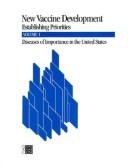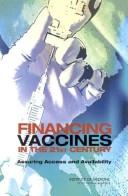| Listing 1 - 10 of 54 | << page >> |
Sort by
|
Book
ISBN: 0128221224 0128221607 9780128221600 9780128221228 Year: 2021 Publisher: Duxford, England ; Cambridge, Massachusetts : Woodhead Publishing,
Abstract | Keywords | Export | Availability | Bookmark
 Loading...
Loading...Choose an application
- Reference Manager
- EndNote
- RefWorks (Direct export to RefWorks)
"Provides methods for finding and testing endophytic and growth promotional microbes Explains the mechanisms of microbes and other biostimulant function in promoting plant growth Evaluates methods for treatments of plants with microbes and microbiome stimulants Identifies areas for new research"--
Microbial inoculants. --- Plant inoculation. --- Agricultural microbiology. --- Microbiology, Agricultural --- Microbiology --- Microbial inoculants --- Phytopathogenic microorganisms --- Inoculation of plants --- Plants --- Plants, Inoculation of --- Inoculants, Microbial --- Microbial products --- Agricultural microbiology --- Inoculation

ISBN: 0309036798 9786610221769 1280221763 030956820X 9780309568203 Year: 1986 Publisher: Washington, D.C. National Academy Press
Abstract | Keywords | Export | Availability | Bookmark
 Loading...
Loading...Choose an application
- Reference Manager
- EndNote
- RefWorks (Direct export to RefWorks)
Vaccination --- Vaccines --- Research --- Government policy. --- Communicable diseases --- Inoculation --- Preventive inoculation --- Biologicals --- Immunization --- Anti-vaccination movement --- Prevention
Book
ISBN: 9781620810675 1620810670 9781620810361 1620810360 Year: 2012 Publisher: [Hauppauge], N.Y. Nova Biomedical
Abstract | Keywords | Export | Availability | Bookmark
 Loading...
Loading...Choose an application
- Reference Manager
- EndNote
- RefWorks (Direct export to RefWorks)
Vaccination. --- Communicable diseases --- Inoculation --- Preventive inoculation --- Immunization --- Anti-vaccination movement --- Vaccination --- Prevention
Book
ISBN: 0128127546 0128127554 9780128127544 9780128127551 Year: 2022 Publisher: London, England : Academic Press,
Abstract | Keywords | Export | Availability | Bookmark
 Loading...
Loading...Choose an application
- Reference Manager
- EndNote
- RefWorks (Direct export to RefWorks)
A New History of Vaccines for Infectious Diseases: Immunization - Chance and Necessity covers the developments of vaccines and how they have obliterated many fatal diseases and infections over time. The book treads a neutral path but does not avoid discussion. As uncertainty in the outcome of vaccination can only be determined by experiment, the path to vaccine development has been scientifically complex because the immune system and the manner in which humans respond to infection is variable and complex. Finally, the book describes the risks and benefits of vaccines in a visibly objective manner.
Vaccination. --- Communicable diseases --- Inoculation --- Preventive inoculation --- Immunization --- Anti-vaccination movement --- Vaccination --- Prevention --- Vaccines --- History. --- history
Book
ISBN: 3319591746 3319591738 Year: 2017 Publisher: Cham : Springer International Publishing : Imprint: Springer,
Abstract | Keywords | Export | Availability | Bookmark
 Loading...
Loading...Choose an application
- Reference Manager
- EndNote
- RefWorks (Direct export to RefWorks)
This book presents in-depth insights into strategies involving plant growth-promoting rhizobacteria (PGPR), including symbiotic/asymbiotic nitrogen fixers and associative/endophyte bacteria, phosphate-solubilizing microbes, as well as arbuscular mycorrhizal fungi and their active biomolecules in legume production. It also examines the latest research findings on the taxonomic status of rhizobia and signal molecules affecting rhizobia-legume symbiosis to improve readers’ understanding of the cultivation of legumes in conventional and derelict soil. The agronomically important microflora broadly discussed have offered solutions to some of the problems associated with expensive fertilizers used in many production systems. This second edition provides an overview of metal toxicity to legumes and presents strategies for the abatement of metal toxicity to legumes. Aimed at professionals, practitioners, researchers and graduate students in microbiology, crop sciences, soil microbiology, biotechnology and environmental microbiology, the book focuses on the basic concepts and practical aspects of useful soil microbiota in legume production. .
Life sciences. --- Microbiology. --- Plant breeding. --- Life Sciences. --- Plant Breeding/Biotechnology. --- Applied Microbiology. --- Legumes --- Crop improvement. --- Inoculation. --- Breeding. --- Crops --- Improvement, Crop --- Agriculture --- Inoculation of legumes --- Legume inoculation --- Soil inoculation --- Improvement --- Breeding --- Microbial biology --- Biology --- Microorganisms
Periodical
Abstract | Keywords | Export | Availability | Bookmark
 Loading...
Loading...Choose an application
- Reference Manager
- EndNote
- RefWorks (Direct export to RefWorks)
Vaccines --- Vaccination --- Vaccines. --- Vaccination. --- Communicable diseases --- Inoculation --- Preventive inoculation --- Biologicals --- Immunization --- Anti-vaccination movement --- Prevention --- Vaccine --- Vacunes --- Vaccins --- Vaccins. --- Vacunes.

ISBN: 1280116099 9786610116096 0309526191 9780309526197 9781280116094 6610116091 0309089794 9780309089791 0309133254 Year: 2004 Publisher: Washington, D.C. National Academies Press
Abstract | Keywords | Export | Availability | Bookmark
 Loading...
Loading...Choose an application
- Reference Manager
- EndNote
- RefWorks (Direct export to RefWorks)
Vaccination --- Vaccines --- Communicable diseases --- Inoculation --- Preventive inoculation --- Immunization --- Anti-vaccination movement --- Biologicals --- Planning. --- Economic aspects --- Government policy --- Prevention
Book
ISBN: 1479844276 9781479844272 9781479876938 1479876933 Year: 2016 Publisher: New York, NY
Abstract | Keywords | Export | Availability | Bookmark
 Loading...
Loading...Choose an application
- Reference Manager
- EndNote
- RefWorks (Direct export to RefWorks)
The so-called vaccine court is a small special court in the United States Court of Federal Claims that handles controversial claims that a vaccine has harmed someone. While vaccines in general are extremely safe and effective, some people still suffer severe vaccine reactions and bring their claims to vaccine court. In this court, lawyers, activists, judges, doctors, and scientists come together, sometimes arguing bitterly, trying to figure out whether a vaccine really caused a person’s medical problem. In Vaccine Court, Anna Kirkland draws on the trials of the vaccine court to explore how legal institutions resolve complex scientific questions. What are vaccine injuries, and how do we come to recognize them? What does it mean to transform these questions into a legal problem and funnel them through a special national vaccine court, as we do in the U.S.? What does justice require for vaccine injury claims, and how can we deliver it? These are highly contested questions, and the terms in which they have been debated over the last forty years are highly revealing of deeper fissures in our society over motherhood, community, health, harm, and trust in authority. While many scholars argue that it’s foolish to let judges and lawyers decide medical claims about vaccines, Kirkland argues that our political and legal response to vaccine injury claims shows how well legal institutions can handle specialized scientific matters. Vaccine Court is an accessible and thorough account of what the vaccine court is, why we have it, and what it does.
Vaccination --- Communicable diseases --- Inoculation --- Preventive inoculation --- Immunization --- Anti-vaccination movement --- Law and legislation --- Political aspects --- Prevention --- United States.
Periodical
ISSN: 2287366X 22873651
Abstract | Keywords | Export | Availability | Bookmark
 Loading...
Loading...Choose an application
- Reference Manager
- EndNote
- RefWorks (Direct export to RefWorks)
Vaccines --- Vaccination --- Vaccines. --- Vaccination. --- Communicable diseases --- Inoculation --- Preventive inoculation --- Immunization, Active --- Active Immunization --- Active Immunizations --- Immunizations, Active --- Vaccinations --- Biologicals --- Immunization --- Anti-vaccination movement --- Prevention --- Vaccine
Book
Year: 2018 Publisher: [Place of publication not identified] : Frontiers Media SA,
Abstract | Keywords | Export | Availability | Bookmark
 Loading...
Loading...Choose an application
- Reference Manager
- EndNote
- RefWorks (Direct export to RefWorks)
The World population will reach 9 billion by 2050, with the majority of this growth occurring in developing countries. On the other hand, one in nine of the World's population suffers from chronic hunger, the vast majority of which live in developing countries. We therefore need to find new and sustainable solutions to feed this increasing population and alleviate the predicted negative impact of global changes on crop production. This e-Book deals with new strategies to improve food security and livelihoods in rural communities, reduce vulnerability, increase resilience and mitigate lthe impact of climate change and land degradation on agriculture. This collection of 18 articles addresses the major abiotic factors limiting crop production worldwide, how to characterize and exploit the available plant biodiversity to increase production and sustainability in agrosystems, and the use of beneficial microbes to improve production and reduce the use of fertilizers and pesticides.
Biodiversity. --- biofertilizer --- Ecological intensification --- Inoculation --- Climate Change --- intercropping --- drought --- Breeding --- Salinization
| Listing 1 - 10 of 54 | << page >> |
Sort by
|

 Search
Search Feedback
Feedback About UniCat
About UniCat  Help
Help News
News